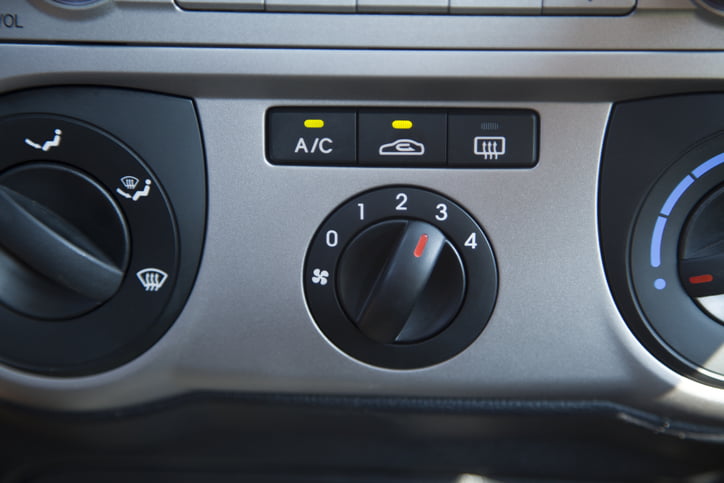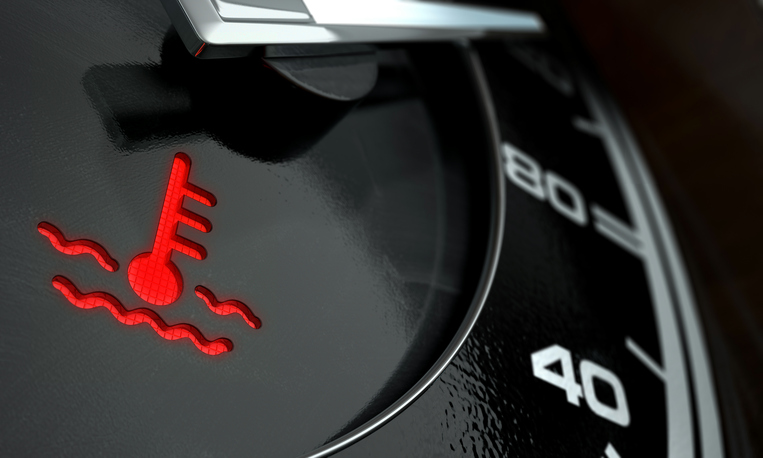If there’s one thing we hate about summer, it’s climbing into a hot car. On the warmest days, temperatures can reach +40°C inside a cabin, meaning a sweaty and altogether unpleasant journey
Nobody likes getting behind the wheel when it’s sweltering, and some people go to great lengths to cool their car down. But what works and what doesn’t when it comes to getting your car cool?
Here, we’ll be busting the myths on the best ways to cool down a car, before giving you some handy tips on how to beat the heat quickly and easily.
How Not to Cool Your Car Down in the Summer
Place Wet Cloths Over Your Car’s Vents
The internet turns up a lot of advice on how to cool your car without air conditioning, but placing wet cloths over the air vents isn’t one we’d recommend. While the cloth will make the air slightly cooler, the fact that it’s reducing airflow means your car will stay hotter for longer.
There are other downsides, too, like the fact the cloths may create humidity or bad odours, or may even interfere with electrical components. There’s no guarantee the cloths will stay in place either, and the last thing you need is a soggy cloth interfering with the gearstick or pedals while you’re driving.
Use Makeshift Ice Packs
In theory, this tip will keep you cool when you climb into a hot car, but the initial relief will quickly be outdone by the fact that you now have to drive with a half-melted water bottle behind your back or between your legs.
Freezing bottles of water is a nice idea, and we’d definitely recommend doing that if you’re taking a cool box full of picnic food to the seaside. But sharing your seat with one isn’t all that practical, and could even be a tad risky. If you really can’t stand the heat, why not invest in a seat cooling pad? That’s right, such a thing exists.

Drive with the Windows Down
We get that not having air conditioning in the summer can make driving pretty dreadful, but don’t make the mistake of driving with your windows down, especially on longer trips.
Cars are built to be as aerodynamic as possible to reduce fuel consumption and maximise MPG. As soon as you open the window, this changes, and the air gushing into the cabin causes a massive amount of drag. If you drive like that for long distances, you’ll see your MPG plummet – so it’s definitely not the most efficient way to cool your car in the summer.
Leave a Fan Running in Your Car
This is an obvious point, but it’s worth making a note of, especially if you’re a new driver. You can buy fans that plug into your car’s electrical output to add a bit more of a cooling effect, but it’s crucial that you don’t leave these plugged in when you switch off the ignition and leave your car – otherwise, you could come back and find yourself with a flat battery.
Even if the fan isn’t switched on, it could still be draining power from the battery; as could any electrical device you leave plugged into the power outlet. Always remember to pull plugs out of the power supply before leaving your car, and if you really want to use a fan, why not consider a solar-powered one like this?

Run the A/C While You’re Stationary
Air conditioning is a godsend for motorists in the summertime, but only if you use it properly. Air conditioning systems work by feeding a fresh flow of air through a refrigeration unit, before pumping the cooled air into the cabin. When you run a/c while your car is stationary, there isn’t a strong enough flow of air to cool down the cabin – so you’re effectively running the unit for no reason, and wasting fuel in the process.
The first thing a lot of drivers do when they get in a hot car is flick the air conditioning on; some even wait for the car to start cooling before setting off, but this can take ages given there’s not enough air to get the a/c working properly. Starting the a/c too early can also put a lot of strain on the battery and the engine, as it needs to work harder to power the system. In other words, never switch on the a/c while you’re stationary.
Keep Your Windows Ajar When You Park Your Car
Tempting as it might be to leave your windows slightly ajar when parking your car on a hot day, you’re asking for trouble. Would-be car thieves will see your open windows as an easy opportunity to gain entry to your car, as they’ll easily be able to jimmy the door open through the open window.
Of course, this might be an OK thing to do if your car is parked on your own drive, but we wouldn’t recommend it anywhere else. On hot days, leaving your windows open an inch won’t make much of a difference to the temperature of your car, so it seems a bit unnecessary when you consider the risks involved.
How to Cool Your Car Down in the Summer
Now that we’ve looked at how not to cool your car down on a hot day, we thought we’d better share how you should do it. Below are some of our top tips on how to get your car cool on even the warmest summer’s days.
No matter how high the temperatures climb in the summertime, you can count on Prestone to keep your car cool and composed. Our coolant/antifreeze is tested in extreme temperatures from -37C to +129°C, so you get peace of mind that your car is protected whatever the weather. For more information and to browse our full product range, visit the Prestone website today.




